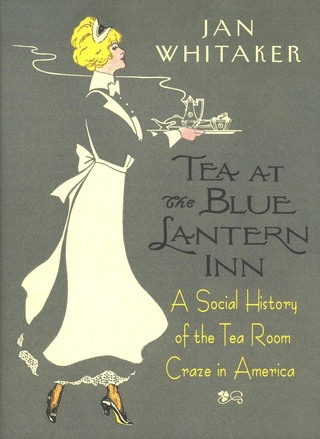Tea at the Blue Lantern Inn
Strangely enough, tea rooms didn't always serve afternoon tea, and their guests were equally likely to order coffee. The underlying meaning of tea room, perhaps, was a women-friendly message that said "welcome" at a time when many eating places were male strongholds. Tea rooms were extremely popular with women in the first decades of the 20th century, both as businesses and as places to eat.
Table of Contents
Welcome to the Tea Room, An Introduction: Transportation, Temperance, and Women -- Mah-Jongg, College Girls, and Candy Stores -- Tea Rooms by Other Names -- 1890s to 1950s
1 Society Sips: High Season in the Hotel Tea Room -- Elite Patrons -- Gentlewomen Proprietors -- Feature: Delicate Teatime Treats
2 Village Bohemian: "We're All Mad Here" -- The Lure of 'Atmosphere' -- Celebrity Spotting -- From Tea Room to Nightclub and Speakeasy -- Other Bohemias, Other Tea Rooms -- Feature: Miss Crump Serves Crumpets
3 Roadside Resorts: More Cars, More Tea Rooms -- Gentrifying the Countryside -- Chicken and Waffles -- Just Like Home, But Without Electricity -- Country Charm -- Box Lunches and Sleeping Porches -- Feature: Two Seasons at the Tea Chest
4 Ye Olde Tea Shoppe: Colonially Quaint, Yet Up-to-Date -- Historic Houses, Inns and Taverns -- Other Sorts of "Oldeness" -- Not "Olde," Just Quaint -- Feature: Ye Names
5 Metropolitan Meals: Twentieth-Century Boom -- Location, Location, Location -- Women, Children, and Men -- Candy, Soda Fountains and Chains -- The Magic of Toast -- Can a Tea-Man Be a He-Man? -- Feature: Catering to the College Crowd
6 Outrageously Orange: Color Crazy -- Just Like the Movies -- Tea a la Russe -- Reading the Tea Leaves -- Fanciful Food -- Feature: "Eating Should Be a Fine Art"
7 The Department of Tea: Best Places to Eat -- Chicken Pies and Diet Plates -- Special Attractions -- Mind Your Manners -- Feature: Hobbing with the Nobs at Fields
8 Conclusion
Bibliography, Index
